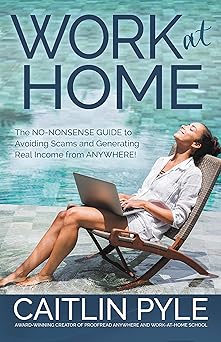
Overview
This book is a compact, purpose-driven resource aimed at people who want legitimate remote work opportunities without wading through endless sketchy listings or misinformation. As the title promises, the core of the book is a large, curated list of more than 300 companies that at least at the time of publication had remote or work-from-home opportunities. The book is short and utilitarian rather than literary: it’s built to be a practical reference you can flip to when you’re job-hunting from home.
What the book contains
At its core the book functions as a directory. Entries vary in length but generally name the company and provide a short note about the kinds of remote roles that employer has historically offered (customer service, data entry, teaching/tutoring, transcription, sales, technical support, etc.). Interspersed with the company listings are brief sections of advice — quick tips on how to approach remote applications, red flags to watch for, and simple guidance on preparing an at-home workspace.
The organization favors speed and scanning: companies are grouped into broad categories so readers with a particular skill set (for example, transcription or teaching) can jump straight to relevant sections. There are also short practical checklists and notes about common application requirements (such as background checks, equipment needs, or typical pay structures like hourly vs. per-task). The overall tone is direct and recruiter-minded: it focuses on what the job seeker needs to know to decide whether to investigate further.
Strengths
Practicality and focus
This book’s greatest strength is its laser focus. If you want a quick, compact list of employers that have offered remote opportunities, this delivers. That saves time compared with sifting through job boards and questionable aggregators.
Breadth of options
Covering 300+ companies gives readers a wide variety of sectors and role types to consider. For people who are open to different lines of work, the breadth increases the odds of finding a reasonable match without niche searching.
Good for beginners
The short, plain-language tips sprinkled through the directory make this a useful first stop for those new to remote work — people who need to understand basic red flags, equipment expectations, and common application pitfalls.
Concise and scannable layout
The book’s format supports quick browsing. It’s easy to skim, find a handful of promising company names, and then take the next step to research those employers in depth.
Weaknesses
Potential for dated information
A directory-style book can suffer from rapid obsolescence. Companies change hiring practices, create new remote programs, or close remote roles entirely — and new remote employers appear all the time. The snapshot the book provides is useful but not definitive; readers will still need to verify current openings and application requirements independently.
Depth limitations
Because the book prioritizes breadth and portability, individual company entries are necessarily short. If you want deep profiles (estimated pay ranges, typical interview processes, current employee reviews, or exact application URLs), this book won’t replace more extensive research. It’s a starting point, not an exhaustive dossier.
Variable usefulness by career stage
Experienced professionals with specialized skills may find the list skews toward more generalist remote roles (customer service, tutoring, transcription, data entry). If you’re looking for high-skilled remote engineering or product roles, a general work-at-home directory may be less immediately useful.
What readers should expect to do next
Treat this book as a curated index. Use it to assemble a short list of companies you want to explore further, then visit each employer’s careers page, read recent employee reviews where available, and verify pay and hiring status. The book is valuable for saving time in the early discovery phase, but it does not replace direct employer research and careful vetting.
How to get the most out of it
Start with role fit: use the grouping by job type to eliminate large swaths of companies that don’t match your skills. Make a shortlist of 10–20 employers and investigate them in depth online. Keep notes on application requirements — many remote jobs still require specific hours or equipment — and prepare a concise remote-targeted resume and cover letter highlighting discipline, communication skills, and tech comfort. Finally, establish a follow-up routine for applications; remote-hiring processes can be different from in-office hiring and sometimes require extra nudges.
Who this book is ideal for
Job seekers who are new to remote work and want a straightforward, low-friction way to discover potential employers. People who prefer a print resource they can annotate. Those who want to broaden their immediate job search options without spending hours on multiple job boards.
Who might not benefit as much
Seasoned professionals seeking niche, high-skill remote roles or highly current, hyper-detailed company intelligence may find the book’s scope too general and its entries too brief. Also, those who want a continuously updated feed of openings will need to rely on websites and company pages in addition to this static directory.
Writing style and presentation
The author’s delivery is direct and utilitarian. The prose is plain-language and oriented toward function rather than flourish, which suits the subject. The book’s pacing and layout make it easy to use as a reference tool during job-search sessions.
Final verdict
Legit Work-At-Home Jobs serves a clear purpose and performs it well: it offers a broad, scan-friendly catalogue of companies that historically offered remote work, accompanied by pragmatic tips for applicants. If you’re beginning a remote job search and want a concise, portable starting point, this book is a good value. Keep in mind the limitation inherent in any print directory of employers — you’ll need to verify current hiring details and dig deeper into any company you decide to pursue. For newcomers and curious job-seekers, the book is recommended as a time-saving first stop; for specialists seeking depth and live market data, it should be one of several tools in your search toolkit.




